If you’ve been a longtime reader of TCWNF (and if eight months can be called a “longtime” anything), you probably know of my tendency to go with the flow, whenever the flow commands it.
What follows is another report in that tradition, wherein I am lured back to my past, and at the same time to the menaced soul of a new generation.
As I’ve noted before, the most unusual and memorable events of my life as of late often begin with an unexpected invitation. This particular episode kicked off with a text from a dear friend, inviting me to an art show set to take place that very evening.
It’d been ages since I’d attended a gallery exhibit — and even longer since I’d been to one that engaged or edified me in any way. This wasn’t always the case; there was a time in my life where I regularly attended such events, and even exhibited-in and curated some. But that was so long ago, it almost feels like the memories belong to someone else. I was still a very dark person then, and still painting monsters like I did when I was a boy.
About that boyhood: I was in early grade school when someone first labeled me an artist. For some unknown reason, our teacher invited a friend of hers to class, whom she described to us as “a professional artist” (whatever the Hell that means). Ostensibly, he was brought in to review our work, which for the most part was of that stick-figures-and-smiley-suns genre.
When he got around to my own little collection of drawings and paintings, his eyes lit on fire in a way I can still dimly recall, all these crimes and decades later. The guy started talking and talking, using a lot of big words I couldn’t understand. In fact, he couldn’t shut up about my stuff, all of which I thought was trash. I remember feeling horribly embarrassed by the experience. I was a shy kid, who mostly kept his mouth shut because of a stammering problem. And here was this very strange cat, snapping pictures of my doodles and demanding to call my parents.
As I grew older, I developed my “technique.” Which is a different way of saying I learned to lie, and in increasingly sordid and complicated ways. Part of the reason I did this is because I was encouraged to, which under a slightly different light could look like coercion, if not exactly bullying.
Ever since that strange afternoon in grade school — Yep, he did call my parents, embarrassing me all the more — the term “artist” swallowed me up like some sort of pre-fab identity whale. If relatives sent me gifts, they were usually of pens, crayons, markers, colored pencils, watercolor sets and, of course, reams and reams of paper. I could’ve built a house with all that goddamned paper (though I imagine the first rainstorm might’ve been a real bummer).
When I entered the adult work force, I only had a tiny bit of CAD training, cobbled together from a work-study I did in a print lab. I had no interest in pursuing a career in graphic design of any kind, and dreamed instead of selling million-dollar paintings to loony rich guys, mafia money laundries and such. But despite the old school ethic I use to yammer about in my college days, I eventually got cyberborg’d with the rest of ‘em. But I figured, what the hell: it was better than sweating for a living.
Around the same time, my interest in the artwork of others began to dwindle. That was never strong to begin with; I hated all “modern” art forms (in my case meaning basically everything from Duchamp onward). But even contemporary forms that attempted to mimic the old ways typically left me cold.
In fact, I spent most of the 00’s and 10’s doing just about anything but art. I was drifting further towards computer languages and software design, with brief forays into doomed business start-ups. And while my visual design gigs over this period were technically “creative,” it was only in the sense of that being the word you use when filling out forms. The work products themselves were soul-deadening consooomer ephemera, and in many ways more grotesque than any monster I could possibly conceive of.
I’d sometimes find myself sorting through a huge bundle of client assets — photos, logos, fonts and shapes, asinine marketing copy and so forth — when I would feel this sudden surge of weird pride. It was the pride of, “I can endure this; this won’t drive me crazy,” but also a pride in how clever I was, how this apex-cyber-monkey could just snap-on a new tool or language or conceptual framework like it was a Lego block.
But art? What was that?
After a while, I no longer cared. Or pretended not to, anyway.
Fast-forward to the present, where I’ve not only stopped making monsters, but producing physical artwork at all. In fact, a few weeks prior, a relatively “longtime” acquaintance of mine told me she had no clue I ever painted at all. It was an old uniform forgotten in a closet. Food for the moths.
So when Jessica sent me that last-minute text about this peculiar gallery show, I confess I was a little taken aback at first. It already displayed some of the hallmarks of similar adventures from my recent past:
An invitation arrives, like a bolt from the blue, for an event to occur at a particular time and place.
The event is something new to me, or one that will unfold in a novel and unexpected way.
Several coincidences, strange interactions and other oddities occur.
As if by magic, a truth is revealed.
A kill-switch activates, breaking the spell and closing down the show.
They say we apex-cyber-monkies are pattern finders. I think there’s some truth to this, but not the whole truth, not the kind which is bound in symmetry. I’ve come to strongly believe that some patterns also find us, attracted to the source of life and reconfiguring itself around it. The more complex the lifeform, the stronger the attraction. And since we’re the craziest thing going on this ball of spit and dust, it’s only natural that they find us all the time.
To say I’ve been hunted by such hungry patterns in recent years is an understatement. That’s not to say all those experiences were bad ones. To the contrary, most from the past ten months or so have filled me with wonder. But not all. One in particular is too terrifying to elaborate on. In times like these, I remember my Bulfinch’s: I think of Aegean sailors seduced by sea devils, of waxwinged pupils flapping towards fiery suns.
So I always feel a bit of trepidation when I feel that tingle, the sense of the process revving up again. And I absolutely felt that now.
I called Jessica back at once. She told me her presence was mandatory, but thought my wife and I might want to tag along. I informed her that Madam Bisone was feeling a bit sideways today, but I’d be happy to join her solo.
She seemed weirdly surprised by my exuberance, enough to remind me what kind of a show it was going to be.
“I mean, you’ve been to these things,” she said. “They’re not high level, so I totally get it if it’s not your bag.”
It was so strange. Almost like she was trying to talk me out of it, moments after having thought to invite me.
A cagey old veteran by now, I recognized this as yet another clue that not only should I attend this fucking thing, but that I absolutely could not miss it for the world.
Jessica picked me up in the early evening. She wore a dazzling blue number that both matched and marketed her gorgeous eyes. She’s a joker like me, and on the drive to the venue we settled into our usual pattern of an improv comedy duo. We riffed on a number of recent public and private idiocies, but I’ve already forgotten most of those. That’s how I like it anyway: laughter spilled carelessly into the void, because there was always more where that came from.
We arrived about twenty minutes after the doors opened. The space was huge and achingly bright. Its thirty-foot ceiling was gridded with florescent track lighting, beneath the glare of which the polished planks glowed almost red. Also illuminated were a number of large, free-standing displays. As I wandered among them, I realized that the curator had split one show into several, with the collected works of each display evoking a particular category or theme.
The place was buzzing, but in a way I wasn’t exactly accustomed to. For example, the artists scampered around like humanized mice in a cocaine trial, only dimly aware of their surroundings. It was the inverse of the old days, when the whole point was to act so cool and detached that your date had to check your pulse every five minutes.
The vast majority of their work was unsigned and untitled. Perhaps that should be unsurprising in this day and age, where masked men make paintings that magically eat themselves upon completion of the sale. But it was still striking, given the show’s purpose and patronage.
I watched said patrons prowl the makeshift aisles. They reminded me of window shoppers at a mall, the eyes barely grazing most pieces before shuffling past. Those who stood still for more than a minute seemed to be actively scanning a display for a particular item, as though searching for Waldo on a crowded beach. But all eyes wore that same distracted glaze, looking without seeing.
I decided to go have a look, and try my best to see.
A note before proceeding:
The selected work showcased below represents only a very small portion of the exhibit. In presenting my photography of these works, I tried to alter them as little as possible, applying only minimal post-production techniques to enhance contrast and color.
I have taken the liberty of naming all untitled pieces, for the sake of clarity when comparing them to others. Apart from one wildcard piece at the end, I've limited my scope to two themes on display.
Of these collections, I’ve decided to highlight those works that spoke the most to me. And they certainly had quite a lot to say.
Dreams
The display that first called to me was also the one nearest the entrance. Entitled Dreams, it clearly meant this word in its most literal sense. These were nocturnal experiences the artists remembered, summarized as narrative snapshots for review. Baptism functioned like a gateway drug, clearing the path for the journey to follow.
At first glance, the enormous, disembodied floating head seems like the work’s main subject. It’s even rendered somewhat differently than the rest, with thick, bold strokes and vibrant colors. But when we trace the path of its diverse and inclusive vomit to its victims below, we get an altogether different impression.
Bathed in the Woke godhead’s corrupted sacrament, the look on the first two faces is one of bewilderment, illness or even a hypnotic stupor. Meanwhile the figure to the right of them seems to have been transformed by the downpour, lacking a mouth, obvious appendages and almost anything else apart from eyes (an animal perhaps?). A mysterious fourth figure in a top-hat appears to be in the process of being physically washed away by this ritual cleansing.
Or are we witnessing an assault?
Does this artist know, in a place beneath language, that the kindly-sounding words the authorities shower him with, day in and day out, are themselves the products of a sick mindset, which seeks only to confuse, dehumanize, weaken, mangle and divide? It’s noteworthy that the head’s upturned gaze comes off as a mockery of piety, neither seeing nor caring about the damage it wreaks upon the “little people” below.
Although the title of the display was “Dreams,” I quickly noticed a secondary theme developing. As though connected by some kind of Jungian wiring in the nous, many of these young artists were dreaming about threats from above. In Pompeii II, this threat becomes more physical and objectively terrifying, featuring a burning sky that’s literally falling onto the artist’s home and family.
While one of the most straightforward pieces in the collection, I still found it edifying, because it neatly captured the apocalyptic flavor of the works to come. It also made me ponder the attendant material realities. For instance, the way the entire top of the frame is covered by lava made me think of the supervolcano lurking under Yellowstone, a ticking timebomb which would paint the skyscape black with ash if it ever blew. I was also struck by the unusual way she rendered the house, with the detail of the roof gutters bleeding lava.
Or is that actual blood?
As for how this work found its way to me, I thought it noteworthy that, a scant few days before, I had written the following line:
Once more, these girls would likely be boys playing dress-up, which would cause the cheers to soar ever higher, to crescendo in a cleansing blaze of ecstasy, as though the heavens opened up and all the manna that poured forth was lava.
Take that as you will.
In any case, it appeared my journey was meant to take an even darker turn. And the hungry pattern did not disappoint. Before we spelunk further into that darkness, here’s a puzzle that hopefully one of you can help me solve.
It’s my strong suspicion that we are looking at a first person perspective (i.e. through the artist’s eyes). His left arm is set straight and palm-up, while the right is palm-down and curiously angled. Given the relatively high skill of the rendering, the contrast seems intentional (and a little unnerving, as the curved limb appears to bend the wrong way). It seems we may be looking at a sky, set in which are two shining spheres (note the reflected gleam on their surfaces). Again, we see the pattern of above and below. But what exactly are those yellow-green shapes? Note that the artist has done blue line work along their edges to further define them.
This work remains a mystery to me, and even more so given the relative sophistication of technique on display.
In me VS ultimate spider, we once again see a threat from above, this time in the form of a monstrous spider perched atop a cave. Despite being armed with a sword, the artist below seems to realize he’s thoroughly outmatched. Behind him stands his own grave marker, an ominous reminder of the battle’s most likely outcome.
What’s more interesting is the addition of the cave. The battle takes place outside of it, but it clearly plays some narrative role. Considering that it’s positioned opposite from the grave, it’s possible the artist is being presented with a tactical choice: stand and fight the monster or flee into the monster’s cave.
Maybe the former choice offers a quick and guaranteed death, but also a public and memorable one. If so, the latter perhaps offers our hero a chance to live a little longer, but trapped inside the spiders’s lair, where no remains may be recovered or mourned should he get caught in its webs.
While there were a host of other nightmares on display, I found none had quite the impact of DEATH IS HERE.
I’m no stranger to horror, in fiction or in nature. Thankfully, that ledger contains far more entries in the former column than the latter, particularly when it comes to physical atrocity. I’m not referring here to mere violence or even death, but to vile and gruesome desecrations of the human form. I’ve known people who’ve witnessed more than their fair share of the latter, including soldiers, cops, paramedics, doctors and even friends to whom horror just paid one of its seemingly random visits.
But when we look at the work above, we must try to visualize it in our “real world,” which is how the artist experienced it in the dream. I believe that’s within our power to do, despite what we have or haven’t witnessed in the material.
Let’s begin with the shapes on the bottom, which I suspect may represent elements that are somewhat disconnected from the main action, occurring earlier in the dream. I see what looks like an exploding chair on the right, and what might be a similar explosion, fireball or flaming entity on the left.
Next we see a row of three devastated human forms. The two weeping children are eyeless, and the adult figure is in the process of having his own eyes gouged out as well. If my eyes are gouged from my own dream body’s skull, the dream would proceed in darkness (if at all). So the dreamer is apparently cursed to keep his eyes for the duration, and forced to watch this grisly scene play out as a helpless bystander.
Finally we see the form rendered top-and-center, which confused me at first. Given the inclusion of the chair at the bottom, I thought it might be an awkwardly angled table, or some kind of four legged monster. After gazing more deeply into the context, however, I realized what we’re most likely looking at:
A decapitated human corpse on fire.
Has the artist seen such images in waking life? Unless he hails from some war torn hellhole, almost certainly not.
In media? It’s certainly possible. But then I think of my own dreams, and how I often see things there I’ve never seen in life, meet people I’ve never met. How much of what we see in dreams is the result of free-floating, disembodied data structures, phantom machines that persist on some substrate of reality that we can’t normally see or measure when we’re fully awake?
And if that’s what’s happening here, what the hell is this machine-ghost trying to do to this kid? And why is it being shown to me now?
I once again grew suspicious of the kind of “flow” that washed me here tonight.
I don’t have much to say about Kayoss Theery, except that it made me sad and a little scared. There was no story or character to ponder here, no spectral visitors or predatory patterns. Just a swirl of formless noise. A world where everything had been declared to be true and beautiful and logical, and therefore nothing was.
Both the fear and sadness budded off the same root. It reminded me superficially of the Dadaists and their mutant offspring who, detecting no divine order or authorship, painted its absence instead.
But I also felt like I might be peering into the soul of the first generation of humans who were fully broken, totally alienated, completely unplugged from their moral, intellectual and spiritual heritage. The page almost seems to cry out:
“Dream? What’s a dream?
“We don’t have those no more, Boomer.”
But then it happened. It was the thing that always happens, at some point during these adventures in the flow.
A genuine revelation was passed my way.
I was immediately captivated by this piece, though at first I didn’t know why. In The Bleeding Veil, we are confronted with what seems to be an unfathomable image; less a narrative than the abstract portrait of a feeling. But upon further inspection, we see not only a story but THE STORY, rendered by an artist who has been gifted with eyes to see.
Though similar in some aspects to Kayoss Theery, the two works also couldn’t be more different. The pattern is once again top-and-bottom, with its noisy swirl of bedlam inhabiting the same position as the addled rainbow kids, the parent and child of New Pompeii, the doomed spider-fighter. But this time, what hovers above the target of our chaotic postmodern world isn’t a threat. Or at least, it isn’t purely one.
The bisected ichor that seems to be descending upon us is the spiritual world, leaking into the mundane, material, scientistic one that too many of us believe we perfectly know and understand.
Note I don’t use words like “it represents” the spirit realm or “is a metaphor” for it. Children do not approach art this way. They don’t yet know how to lie like that. And so it simply is the realm, which the artist was shown in the closest form that his or her mind’s eye could perceive and record it.
The spiritual world’s duality shows us the opposed forces of Life/God and Death/Satan, which are part of the same substance in the same way that angels and demons are the same species. The line between them is sharp, and the closer our souls hover to that line, the greater the danger that we’ll confuse evil for good, and cross it. I should know.
Also note the way this bleeding or merging process is irregular along its edge. The spiritual world’s fusion into the material isn’t like some Platonic gas leak or Newtonian law, where an isolated force steadily fills a theoretical vacuum. It’s messy. Unevenly distributed. It doesn’t effect all parts of material reality or its inhabitants at the same time, or with the same depth.
But it’s happening. The process isn’t only well underway, but is accelerating at a rate that will surprise, bewilder and terrify a lot of folks who’ve been taught that such layers of reality are fairy tales. They will see “great signs and wonders” of a kind they’ve been stripped of the language to explain, and struggle not to lose their minds. Many will decide to join forces with the Darkness, confusing it for Light. And when the time comes, they won’t be doing that in any metaphorical way. Maybe they won’t even be confused.
My suspicion is that the artist glimpsed this process not in a dream, but in a vision, and therefore becomes something like a Divine reporter or herald as a result. What’s unfathomable is not the artwork itself, but the reason why some of us are shown this part of reality and others aren’t. Have they been rendered blind, as the demonic intruder of DEATH IS HERE implies?
Maybe. Or maybe it isn’t a matter of disability but of disdain for truth. Maybe God only shows such visions to those He trusts won’t show a vain contempt for them, or misuse them in sinful ways. Or maybe they simply have to be invited in. I honestly don’t know.
In some important ways, I realize I can never know. Our waking eyes are like the portholes on a ship, where much more is concealed than revealed. The mind’s eye is more expansive perhaps, but is still limited by the language we use to describe what it sees.
This artist was shone something indescribable, but described it nonetheless. That’s why art is made. To tell truths directly. To cut out the middleman of words, because all words will surely fail us in the strange days to come.
Including all the ones I’ve written here. Because I am merely a “professional artist” these days, not a real one.
Yet I received illumination anyway. And I am grateful for it.
I presumed The Bleeding Veil would mark the flow’s grand finale for the evening. Moments always arrive when these little escapades reach some logical and preordained conclusion, or are suddenly truncated by some kind of intrusion.
For instance, Jessica might have shown up at that moment saying she suddenly felt ill, or that a work emergency just sprang up, or some other excuse that would cut the evening short. Nothing so dramatic as a meteoroid crashing through the ceiling (at least not yet. The year’s still young).
But since none of that shit was happening, I decided to wander around and see what other truth might be waiting for me in the bushes.
I LMFAO’d when I found out what that was.
The God I am coming to know is many things, and All-Time Greatest Comedian is one of them. Seriously, you can’t beat the Sky Daddy’s punchlines. It might even be dangerous to try.
Robots
The description card above the display basically translated to: “Draw a robot designed to replace a job.” Though my inner Magnus bristled and snarled on his chain, his owner couldn’t help but snicker.
The first of these mechanized scabs to catch my eye was SmartROBOT, who I presume will send whatever's left of the intelligentsia to the breadlines. Checkmating
in one spectacular move, the artist saw fit to install an organic brain, solving for security, alignment, neuro-symbolic manipulation and, perhaps, chocolate-shitting insects too. Bonus: the floor model includes sweet flame decals on the crotch. Though it makes me wonder what SMARTrobot gets up to in his spare SMARTtime.Next up we have a pair of Lem-Bots, helpfully curated side-by-side for my amusement. By that I’m of course referring to the great Stanislaw Lem, and his heroic scientist/astronaut/investor Ijon Tichy. The joke here is that I just finished re-reading Memoirs of a Space Traveler, a collection of shorts that features several of Tichy’s most horrifying encounters, as well as one of his funniest (and perhaps even the funniest shit that Lem ever wrote).
No spoilers except to say that if you chance upon the book and read memoirs IV (where you’ll meet a mad physicist named Molteris) and V (also called “The Washing Machine Tragedy”), you’ll grasp the potential woo factor here. The tales are beside each other in the book as well, and the technological monsters they describe will be familiar enough to make you shudder and grin.
To cap things off, let’s take a gander at a pair of synthoid scumbags who’ve got it all. While it’s said that ChatGPT may soon replace striking Hollywood writers (though I’m not sure anyone would notice), that pile of junk’s got nothing on DOITALLBOT and Everything Robot, as they’ve been designed to replace everyone, everywhere, all at once, period.
While ER’s schematic requires a bit of imagination, DOITALLBOT boasts an extensive list of features, including:
clean mode
body gard mode
putting
child care
money
Morning routien (make lunch, pack backpack, make breakfast, set my alarm, etc.)
walk dog mode
car mode
homework mode
Voice
…and much, much more!
DIAbot also includes a full washer/dryer, obviously, to maintain its continuity with Tichy and Lem. I particularly like the low, low price tag of $550.65. That’s even cheaper than all the illegal immigrants it will handily replace! What a bargain!
The product also ships with a fairly conspicuous “Self-Destruct” button (which Magnus immediately began hammering away at, in the back alley arcade of my mind).
The last piece I would visit before the kill-switch got flipped might seem like a strange one. But it had a deeply personal meaning to me, the reasons for which that would take an essay all its own to explain.
This was one of an entire collection of Gummy Bear drawings, produced by slightly older artists. That in itself wasn’t amazing; tackling a singular subject is bog-standard for an art class of any age. What was amazing was the mirror I was being shown.
Their results ranged all over the map, from cartoonish simulacra with heavy lines to incoherent scrawls. They were older, yes, but the sorting process wasn’t yet complete.
What do I mean by that?
A brief story:
In the summer before my senior year of high school, my art teacher was all over my ass. I’d been scrambling to put together my portfolio to hit a deadline, and she was insisting I include at least one still life in it. I had been resistant up to that point; I absolutely hated the format. I was mainly a painter of figures by that time, always preferring people (and monsters) to objects. Even the name sounded like an obscenity to me: What’s so still about life?
And then there was the curation element, cobbling together an assortment of unrelated items within a frame. It all felt so phony (not to mention astronomically dull). But she persisted, claiming they would need it to assess my technical skill.
“Do you want the fucking scholarship or not,” she’d say.
When she finally wore me down, I sought out a suitable subject. Only one, in this case: a single orange resting on a windowsill. Even in conforming, I somehow managed to be a defiant little bastard.
I worked on the painting for weeks, carefully reconstructing the light on its leathery texture in oil. By the time it was ready for review, I found I was oddly proud of the result. I still hated having to do it, but thought it might provide a nice contrast with the rest of my slides (which featured, among other things, a self portrait of my naked corpse washed up on a beach, painted on a giant rectangle of cardboard I found in the trash). I even got the scholarship.
But the important part is that, by this point, the sorting process was complete. No one had any illusions left about which paths were open and closed to us. There would be no more gummy bear grids, comparing the apples of artists to the oranges of something-elses. That one would be an artist, that one an athlete, that one a scientist, that one a checkout cashier, that one a jailbird, and so forth.
Like my orange, the artist’s sugary beast above squats alone in a void. Hers was the only attempt of the bunch that succeeded at “realism” to any noteworthy degree, in the sense that a person could look at the actual object and the drawing and find much agreement between them. Because of this, I knew she would find herself sorted, soon enough. And for reasons that are difficult to say, I found my heart was breaking for her.
Because to chase Truth in accordance with the agreements of non-artists, to seek out their asinine approvals and tedious tastes, is to in some way rent out a piece of one’s soul for applause. In the years ahead they would pat her on the back, call her “creative” and “talented.” Gone were the days of kitchen magnets and refrigerator doors. From now on, her work would be framed and hung on walls as decorations, or as trophies for parents to brag about.
As for that painting of my orange?
Like so much of my work from those bygone days, I’m pretty sure I burned it.
That’s what I was thinking about when the spell broke.
Jessica appeared at my shoulder. Turns out it wasn’t she who had to leave, but I. She handed me a mission that would take me away from that place, to guard a treasure of infinite value. In other words, a mission I couldn’t possibly decline.
As I was leaving, I stopped to steal one last look at the young artists as they scampered about. I wanted to see if I could pick it out: the face of the one who was shown the bleeding Veil. But there was no hope in that. And probably no point in it either.
It would simply be another face in the crowd, betraying nothing of that sacred vision. Because the truth is any one of us are equipped to see it. Such vision is our birthright, and the reason why spirits are lured to us, just as we are lured to them.
It’s also why the dark ones prefer to gouge our eyes out — or even better, trick us into doing it ourselves. They dwell in darkness, and blindness loves company as much as misery does. But they misunderstand the problem; all is mechanism to them, but the physical machinery of our eyes isn’t what produces the vision, nor is the brain they’re wired into. What produces it is the thing that dreams. That elusive thing is both source and signal. It never shuts off, not even when we sleep. Not even when we die, I’d wager. Others may place those bets as they see fit.
Art is the native tongue of that elusive, dreaming thing, that snipe which the AI panjandrums and other maniacs will chase and never catch, seek and never find. At its best, it reminds us not only of the truth of who and what we are, but of reality’s true shape.
The truths that art conveys are sometimes terrifying, sometimes cathartic, sometimes unspeakably beautiful and sublime. Some are acids that dissolve evil illusions, and leave the illusionists naked in the spotlight. Some are even prophecies. Spoiler reels of what’s to come, or reports of what’s already arrived but is difficult for most to see.
We ignore them at our peril.
P.S. If you found any of this valuable (and can spare any change), consider dropping a tip in the cup for ya boy. I’ll try to figure out something I can give you back. Thanks in advance.

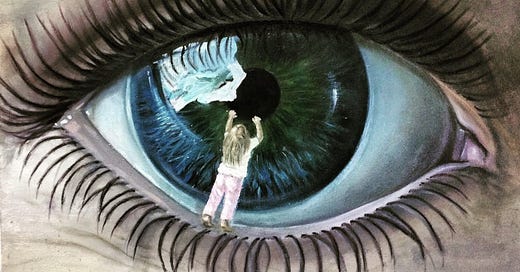



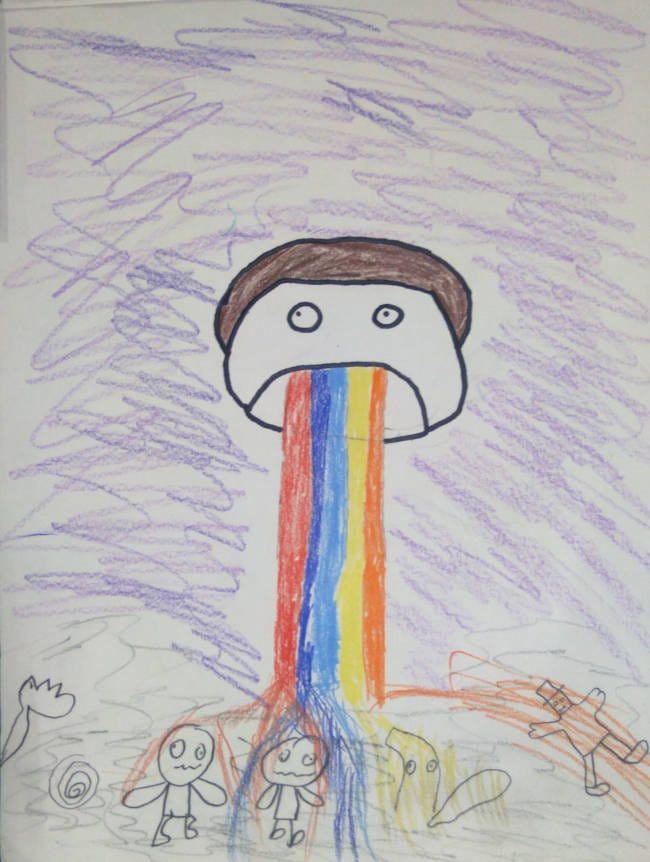
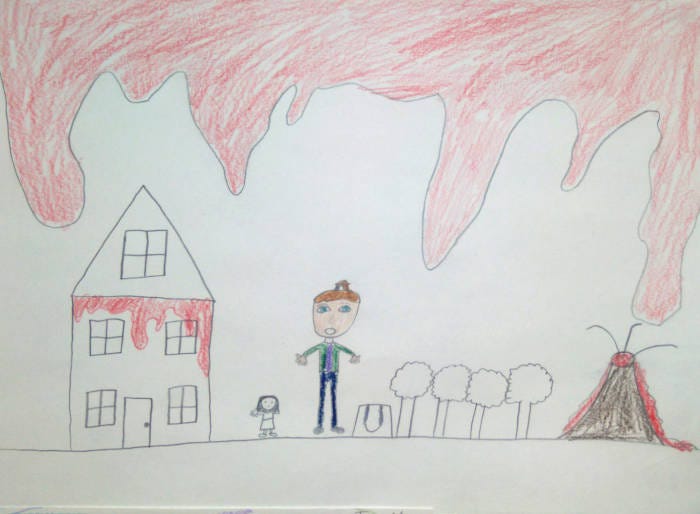
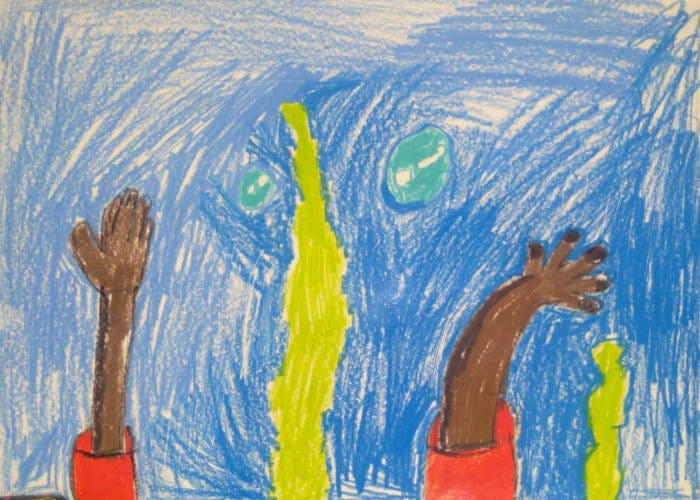
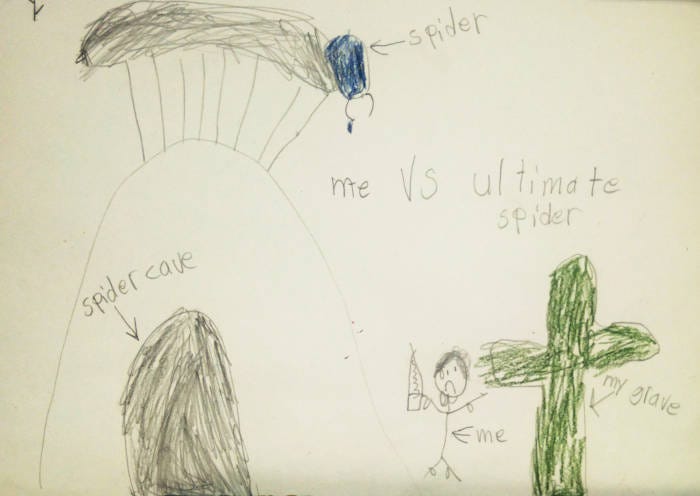
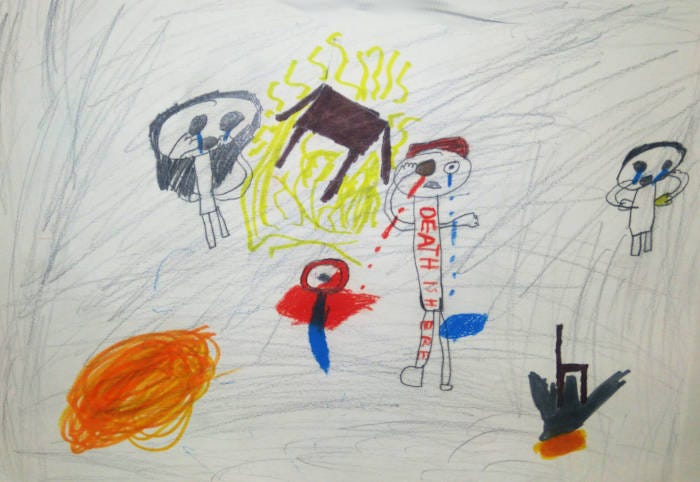
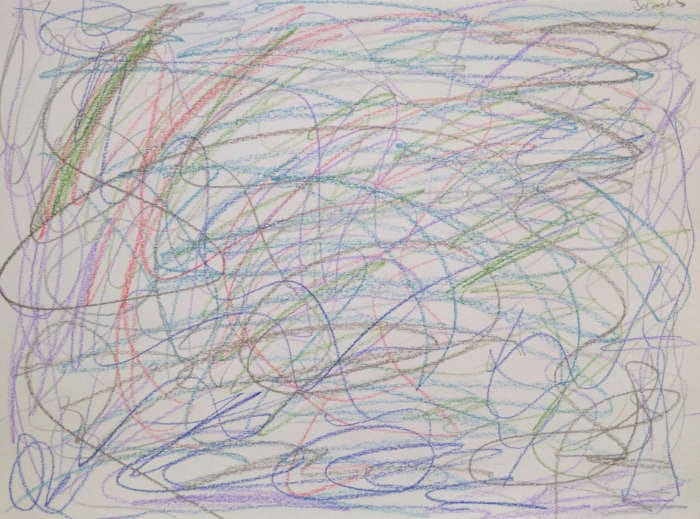
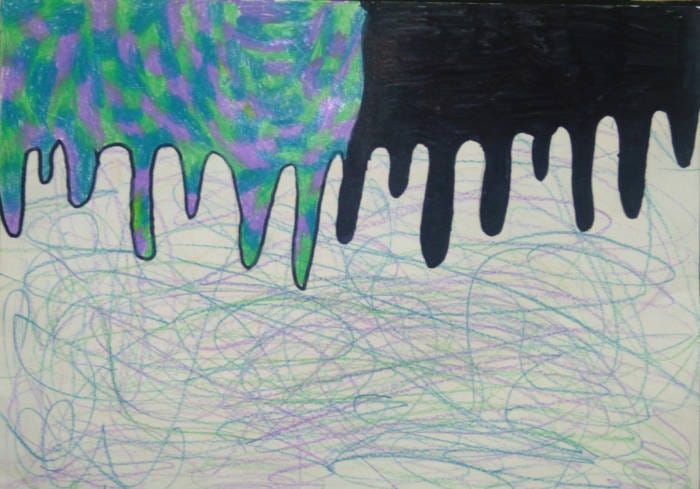

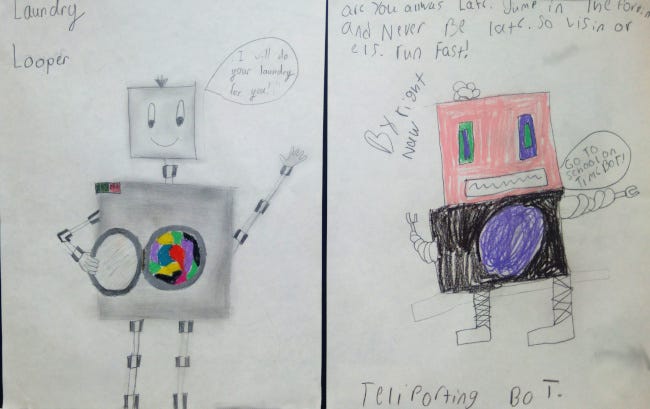
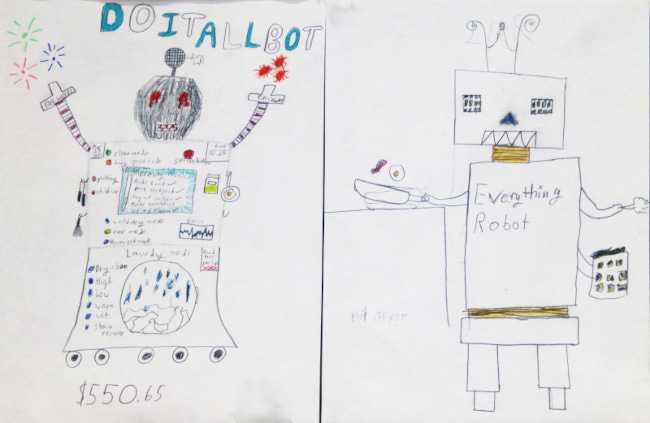
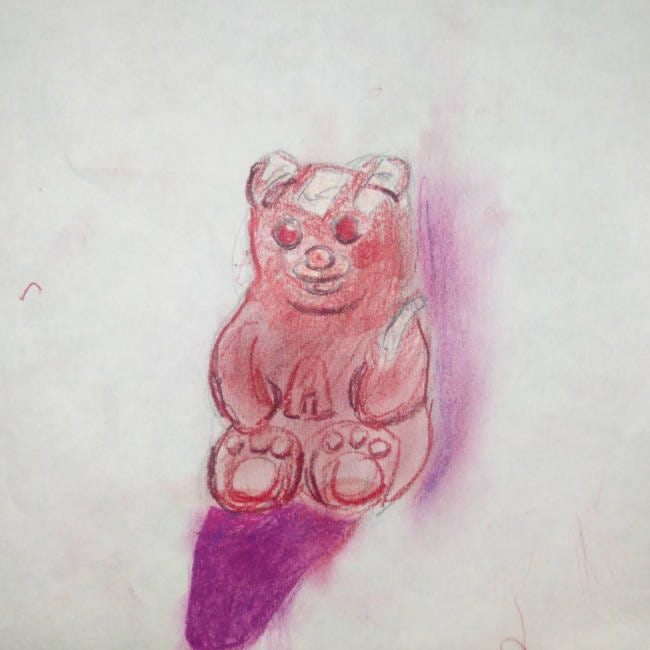
Maybe it's just my own personal experience with something similar, perhaps you just have a remarkable way to weave a gripping narrative about things that seem mundane (you do), but this is one of those pieces I read and just know it's going to haunt me and probably come up in a dozen conversations over the next week.
The last paragraph in particular is, in particular, standout. I remember when I wrote my first novel, I wrote it from a small, dingy college town apartment I shared with three total strangers who were up quite literally every hour of the day with raucous parties, on academic suspension, unemployed, living on what I could fit in the mini-fridge under my bed and barely ever leaving the confines of that room because I was living on roughly $20 a week. Despite being in such a miserable situation, I'd never felt the muse speak so clearly before then, and, to make a long story short, rereading the thing years later when I decided to re-write it, mostly to touch-up on the prose and dialogue, I realized that what I'd ultimately done was not just write a very elaborate, perhaps somewhat fantastical analogue to my present situation at the time, but also, in the process, provided myself with a sort of "exit strategy" for it as well. It was kind of incredible how I'd subconsciously crafted this how-to guide to escape the hole I'd fallen in and, in a way, subconsciously followed it without ever realizing the parallels. When I go back and edit the other stories I wrote from either that time or the thick of the lockdown era, it seems consistent that the themes and ideas they hinge on always reflect a major issue I was facing or a philosophical question question that was dogging me at the time. Love versus infatuation, the nature and causes of abusive relationships, whether or not to help someone who isn't willing to help themselves (at your own expense, at that) - it seemed that while I thought I was writing fun, exciting stories packed with wish fulfillment, looking back they almost read like Socratic dialogues between different positions on the topics and questions I had distilled into characters within the narrative to debate their merits. To put it another way, what I thought was pure catharsis was disguised guidance.
Point is, there is a power in art that I feel like the "dark ones", as you rightly call them, have done their best to hide and make us forget that it has, so they can weaponize it against us. I've come to believe art is like food - a good, well-composed, and sincere narrative, musical piece, painting, what have you, can have a variety of positive effects on your spiritual state. Conversely, consuming the debased garbage pumped served by the entertainment industry is the spiritual equivalent of junk food. At this point listening to some of the music they blast into our ears without consent is akin to being force-fed pure Beyond Meat and canola oil slurry through a funnel, and has the same effect on the soul that such a grotesque combination would have on your body. And then we wonder why so many people - young people especially - seem so despondent and deadened.
I already wrote more than I intended, so I'll cap it off with this - you're right that AI could never hope to replicate what true human art from a genuine place of passion and emotion can generate. I suspect there's a divine quality to it a machine simply cannot duplicate. That's why I welcome the coming "purge" of the entertainment industry that they seem to fear. The mediocrities that currently live fat and happy shoveling literal poison slop into troughs for the public to consume may be displaced and dispossessed by ChatGPT, which can mimic their soulless trash in almost every facet, but I'm hopeful that this will allow pockets of new, more sincere, more uplifting, and more human artistic movements to flourish in the aftermath. They won't be big. I doubt they will be popular. I have a feeling that, should certain elements remain in power, they will try to crush in where they find it. But I do think it will come, in time.
Wow. This is an amazing composition.
Considering all that we now know, scary and depressing as well. Makes me want to weep, as my heart begs for help for the children. It is now ALL about the children. Evil, TRUE evil is no longer just at our doorstep. It is here, and it is after the children.